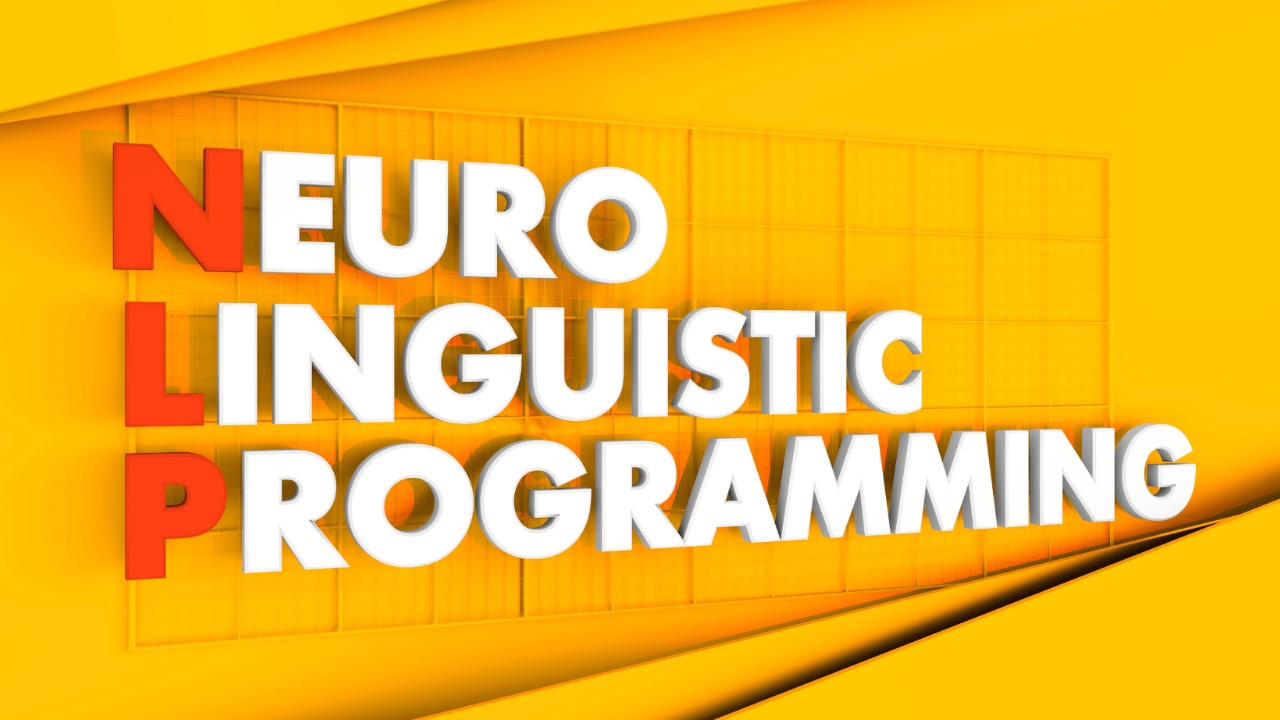
What is NLP and how does it work?
Neuro-Linguistic Programming (NLP) is a psychological approach that involves understanding and changing human behaviour through the interaction of the brain (neuro), language (linguistic), and patterns of behaviour (programming). It is based on the idea that people can change their thoughts, feelings, and behaviours by altering their internal "programming" or mental processes, often by using specific techniques that tap into the power of language, perception, and mental states.
Key Components of NLP:
Neuro: Refers to the brain and nervous system, which process and interpret the world through our senses (sight, sound, touch, taste, and smell).
Linguistic: Involves language and how we use it to represent and organize our experiences. This includes verbal and non-verbal communication, such as body language, tone of voice, and gestures.
Programming: Refers to the mental "programs" or patterns of behaviour and thought that people develop through experience. These mental patterns shape how we think, feel, and behave.
NLP operates on the premise that the way we perceive the world shapes our experiences, and by changing our perceptions and thought patterns, we can change the way we behave and feel. NLP involves a series of techniques designed to reprogram these mental patterns, improve communication, and achieve personal or professional goals. Here's a basic overview of how NLP works:
Understanding Thought Patterns and Beliefs:
NLP posits that our beliefs, values, and past experiences shape how we interpret the world. If these beliefs are limiting (e.g., "I'm not good enough"), they can result in self-sabotage or negative behaviour.
The first step is identifying these limiting beliefs and reframing them. For instance, someone might reframe "I can't do this" to "I haven't learned how to do this yet," which can shift their mindset.
Anchoring:
NLP introduces the concept of "anchoring", which involves associating a specific feeling, state, or behaviour with a particular trigger (like a gesture, word, or touch). By practicing this, individuals can "anchor" positive emotional states (confidence, relaxation) and use these triggers in stressful or challenging situations to help them access those feelings at will.
Submodalities:
Submodalities refer to the finer details of sensory experiences. For example, a memory might have visual elements (colours, brightness), auditory elements (volume, tone), and kinaesthetic elements (temperature, texture). By changing the submodalities of a negative memory (e.g., dimming the colours, lowering the volume), NLP can reduce emotional intensity and help shift someone's emotional response.
Reframing:
Reframing is the process of changing the way a person perceives a situation. In NLP, this involves looking at a situation from a different perspective to make it more empowering. For example, if someone views a failure as a permanent setback, reframing it can help them see it as an opportunity for growth or learning.
Rapport Building:
NLP techniques emphasize the importance of building rapport with others through mirroring and matching body language, tone of voice, and words. By doing this, NLP practitioners believe they can create a sense of trust and understanding, which enhances communication and cooperation.
Meta-Modelling:
This technique involves asking specific questions to uncover and challenge vague, generalized, or limiting language. By probing deeper, the NLP practitioner helps the person clarify their thought patterns, identify distortions, and create more empowering beliefs and behaviours.
Swish Pattern:
This technique is designed to help people change unwanted behaviours or thought patterns. It involves visualizing a negative thought or behaviour and then "swishing" it with a positive, desired image or behaviour. The idea is to create a strong association with the new, positive image, gradually replacing the old, negative one.
Visualisation and Mental Rehearsal:
NLP often uses visualization to help individuals mentally rehearse success in different situations, such as public speaking or achieving a goal. By vividly imagining themselves succeeding, the brain is conditioned to feel more confident and capable when faced with the real challenge.
Applications of NLP:
NLP has a wide range of applications in various fields, including:
Personal Development:
NLP is often used to help individuals overcome fears, phobias, and limiting beliefs, boost self-confidence, enhance motivation, and achieve personal goals.
Therapy and Counselling:
NLP techniques, such as reframing and anchoring, are used by therapists to help clients break through emotional blockages, reprogram negative thought patterns, and overcome psychological challenges like anxiety, depression, or trauma.
Business and Leadership:
NLP is widely used in sales, marketing, and leadership to enhance communication, build rapport with clients and colleagues, improve negotiation skills, and motivate teams.
Coaching:
NLP is a popular tool in coaching, as it helps clients identify and overcome obstacles to success, improve decision-making, and cultivate a positive mindset.
Education:
In education, NLP can be used to enhance learning by tailoring teaching methods to students' sensory preferences (visual, auditory, kinaesthetic), improving concentration, and boosting motivation.
Sports Performance:
Athletes use NLP to enhance focus, visualize success, break through performance barriers, and manage stress or anxiety during competition.
Criticism and Considerations:
While NLP has many proponents, it has also faced criticism in some circles:
Lack of empirical evidence: Many critics argue that NLP lacks rigorous scientific validation and is based more on anecdotal evidence than controlled studies.
Overhyped claims: Some practitioners make claims about NLP being a "magic bullet" for personal transformation, which has led to scepticism.
Varied quality of practice: NLP training can vary widely in terms of quality, with some programs being well-regarded and others criticized for being overly commercialised.
In Summary:
Neuro-Linguistic Programming is a set of techniques aimed at changing thoughts, behaviours, and emotional states through the manipulation of language, perception, and mental patterns. It is often used for personal development, therapy, coaching, business, and performance enhancement. While it has gained popularity for its practical applications, it is important to note that the scientific community remains divided on its efficacy and long-term benefits.






